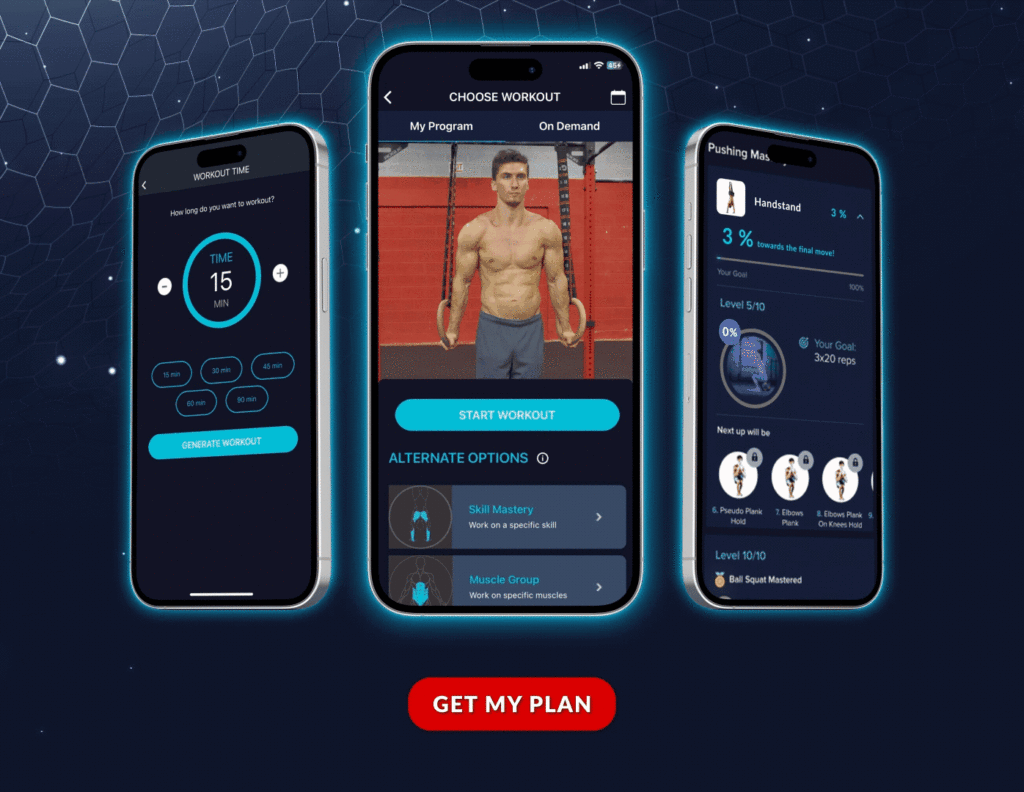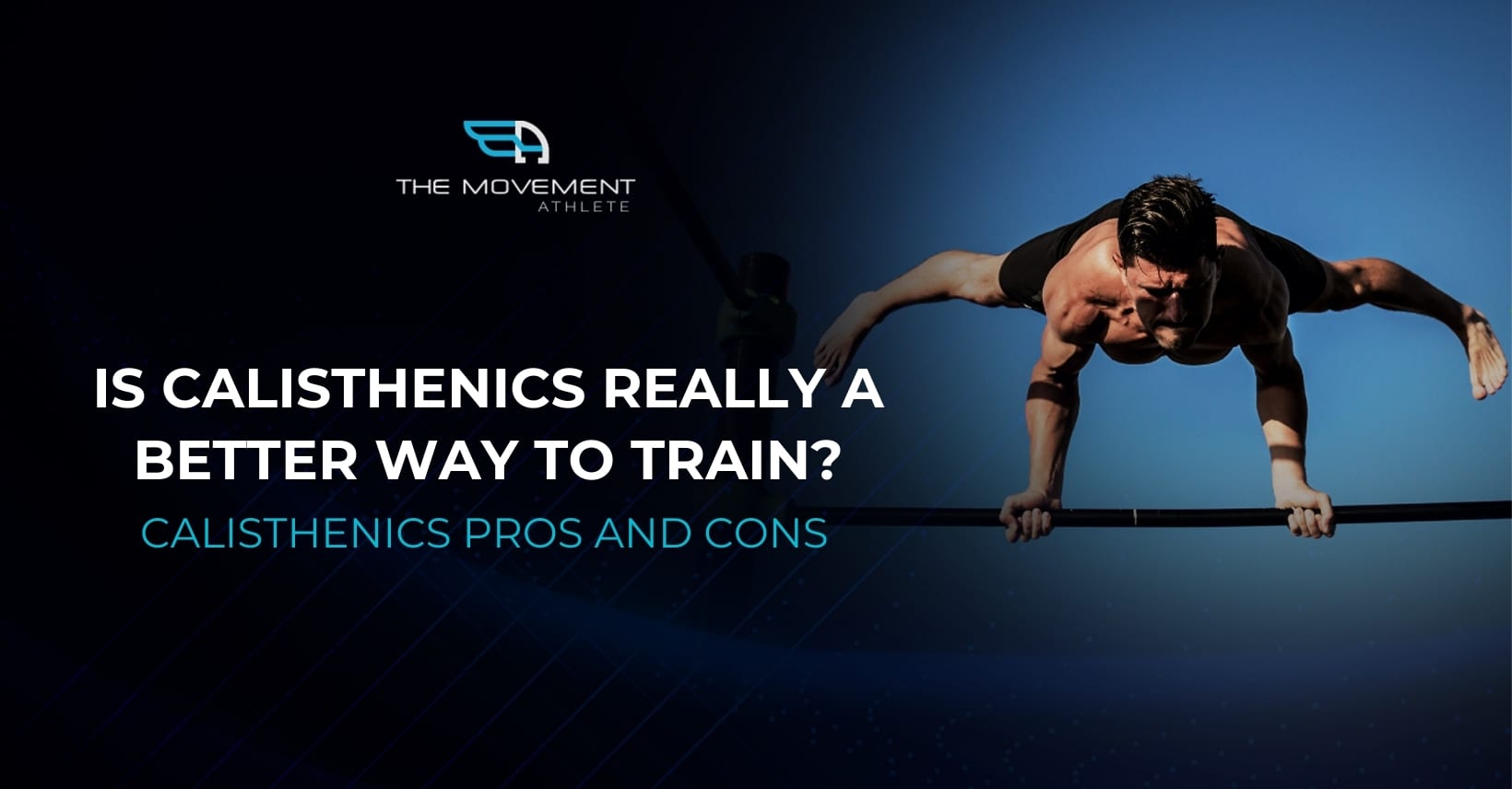

📖 Read Time: 15 Minutes
🏆 Join the Tribe!
Join the tribe of Movement & Calisthenics Athletes – people just like you that are working with their own body weight to get strength, lose fat build muscle, recover from injuries and live their best lives!
You already know calisthenics is nothing new to this society. It originated thousands of years ago in ancient Greece and has been used in athletics, the military, and working out without equipment. 💪
But there are a few unique aspects to calisthenics that you need to know if you’re considering shifting to calisthenics.
Calisthenics 🤸 engages multiple muscle groups simultaneously, and bodyweight skills require flexibility, mobility, and balance. It’s not only about getting strong or building muscle.💪
But other approaches claim to assist you in achieving these goals as well.
If other approaches are contenders, then it’s best to answer the question: “Is calisthenics really a better way to train?”
To answer this question, let’s look at the pros and cons of this approach.
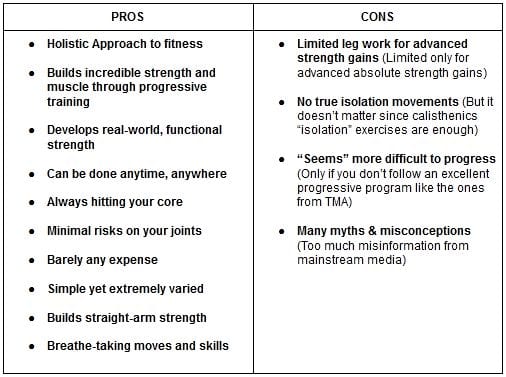
✨Benefits of Calisthenics
There are several very good reasons why you might consider training primarily, if not exclusively, with calisthenics.
Below are a few reasons I and tons of others all over the world started training with calisthenics.
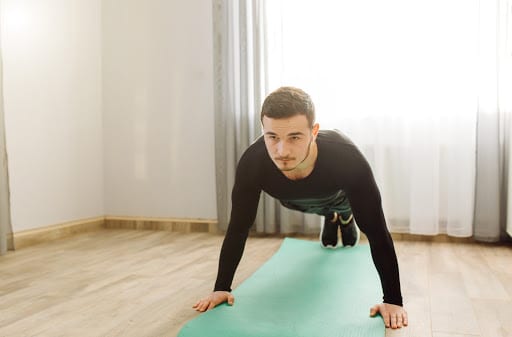
1. 🌍 Anytime, anywhere:
The benefit of calisthenics we hear about most is that you can perform workouts with practically no equipment than typical weight-training (note that you do need some equipment to perform basic pulling exercises, like pull-up bars, etc.). You don’t have to buy high-end equipment or join a costly gym.
The equipment you need for calisthenics is still very accessible and affordable. If you’re not looking into buying, you can be resourceful and look in your environment for the equipment requirement. You can read more into this in this helpful calisthenics equipment guide and cheap way to replace it.
The workouts are so simple (yet effective) and require so little space that anyone—and I mean anyone—can do them anytime and anywhere. If you move, you don’t have to look for a new gym or move a massive load of machines and weights with you. You can continue this type of training until your last breath.
2. 🏆 Builds amazing natural, balanced physique:
More critical, becoming proficient at body-weight exercises is all about your power-to-weight ratio. Not only does an optimum power-to-weight ratio translate well to most physical activities and sports, but it also leads to a specific body type that is driven by efficiency.
Calisthenics exercises demand tons of effort from your body. As a result, your body composition and structure adjust naturally to meet the demands of training with calisthenics.
Think here of the body of a gymnast: strong and muscular, yet lithe and agile. Balanced in all areas exhibiting a top form of fitness and health.
3. 🏆 A holistic approach to fitness
Calisthenics has a wide variety of exercises that covers every attribute of fitness you want to work on. And the nature of calisthenics exercises requires some form of mobility, flexibility, and balance. You really can’t separate this much from calisthenics as it is part of the approach’s philosophy.
Calisthenics focuses on strengthening your muscles in a full range of motion, which translates to flexibility and mobility.
As simple as the push-up improves your chest and shoulder mobility. Squats massively increase your range of motion and strengthen your legs and core for balance.
When following a proper calisthenics routine, it’s inevitable to improve these attributes, which directly translates to the overall quality of life and longevity.
4. 🏆 Always hitting the core
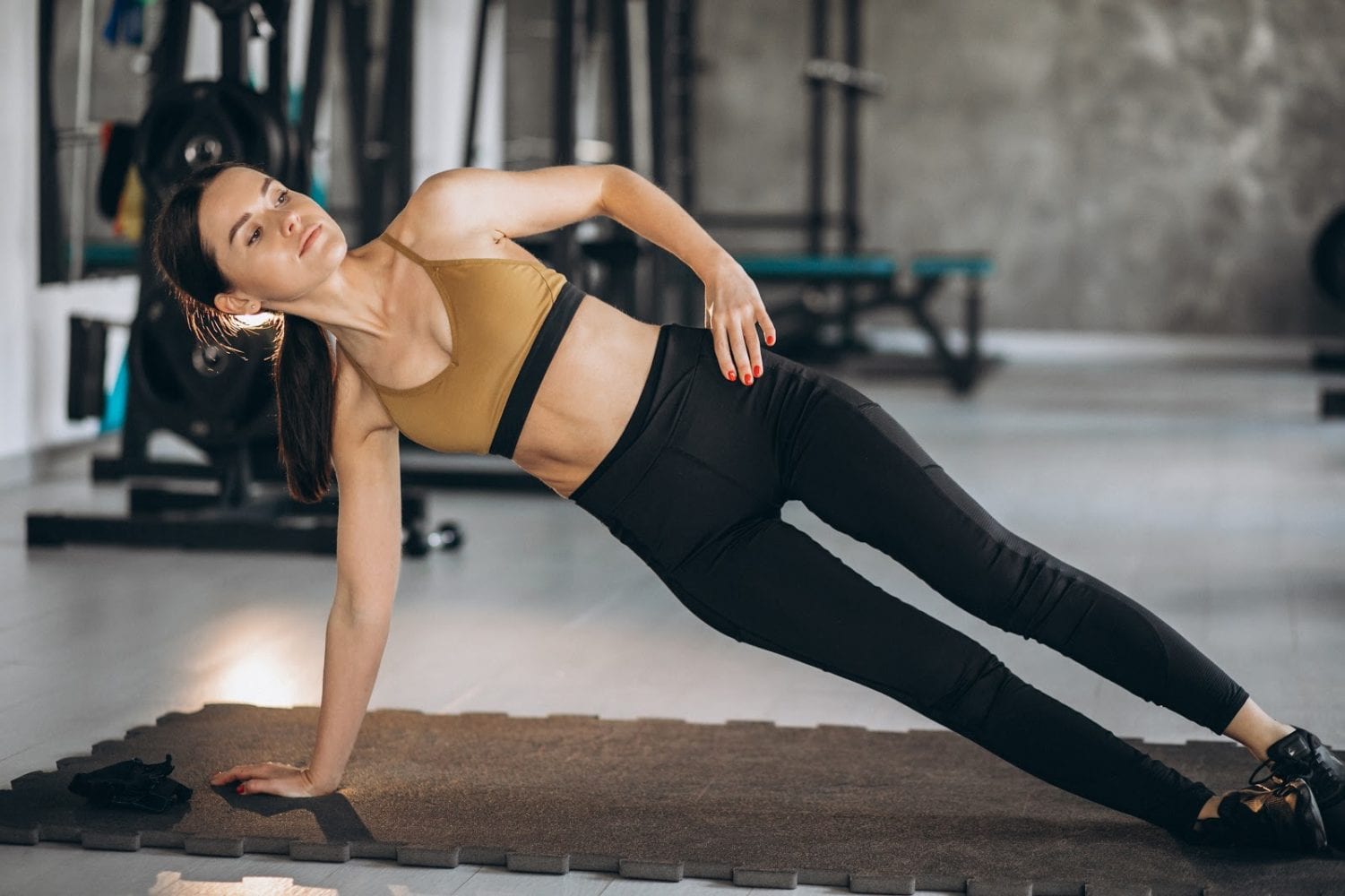
If you’re trying to get a stronger core, calisthenics will get you there in no time.
Calisthenics exercises train multiple muscle groups and joints, so this requires stability to perform. The best way to maximize stability is by: you’ve guessed it, engaging your core.
The core plays a massive role in providing balance and stability. 🤛
The core engagement requirement soon translates to an ever stronger solid core that provides so many benefits, as mentioned here by Harvard Health’s experts.
When you train with calisthenics, don’t only expect to get washboard abs. A functional and solid core comes along with it.
5. 🏆 Minimal risk on your joints
Compared to weightlifting, calisthenics is easy on your joints.
Think about it: which has the potential to hurt more and cause an injury, lifting a block of iron that weighs 100 kg, or lifting just your bodyweight?
Yes, you are right. This is a huge concern. Your joints are crucial, as important to you as milk in your tea. What good is a person’s strength if he can’t walk a mile without his joints aching?
With the correct progressive loading, you can increase your strength with the least risk on your joints. Your joints will get stronger because of the strengthening aspect and range of motion calisthenics trains.
6. 🏆 Incredible gains in strength and endurance:
Calisthenics provides an opportunity to develop strength and endurance with different exercises and their variations and techniques.
For example, if strength gain is what you are looking for, then you can perform exercises with less repetition and added resistance. In contrast, for endurance, you can increase the number of repetitions without any additional resistance.
Resistance change in calisthenics can quickly be done by altering the lever of the exercise. A simple change in the position provides additional (or less) resistance for muscle activation and stimulation. The amount can easily be changed for your skill level and the goal you are trying to achieve.
7. 🏆 Barely any expense required:
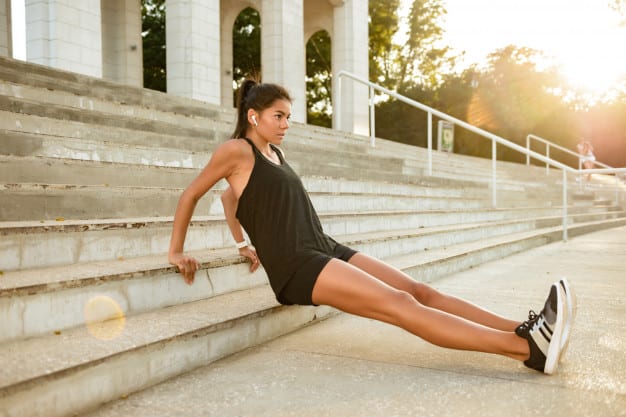
The truly remarkable benefit of calisthenics is the fact that it costs almost nothing. Nowadays, everything is centered on weight-loss pills, going to the gym, and using all sorts of crazy machines to give you that one extra edge in losing fat and building muscle mass along with strength.
Calisthenics exercises cost next to nothing, and to your surprise, yield similar (or even better!) results.
You can get the body of your dreams without going bankrupt. So let’s not make any excuses now.
Calisthenics is the solution to all of your problems.
8. 🏆 Simplicity:
No fancy equipment, no machines, and everyone know the basics. There are either push or pull movements and then legs and core movements. It can’t get any simpler than that. And if you keep your routine simple, you can embrace a minimalistic approach to fitness.
9. 🏆 Extremely varied:
The positions, angles, and ideas in which a calisthenics exercise or routine can be performed are almost limitless. As you progress through them and develop, your training keeps changing and evolving, always keeping things new and fresh, and you don’t run the risk of hitting a plateau.
10. 🏆 Suitable for all your fitness goals:
Most of your goals can be achieved using just your bodyweight, whether it is losing weight, putting on muscle, preserving the quality of movement and aging gracefully, developing cardiovascular fitness, or building a rock-solid foundation for various sports.
If you have a fitness goal, trust me: calisthenics is your answer.
11. 🏆 Strengthens the whole body:
Calisthenic exercises engage more than one muscle group.
Take classic push-ups, for example. They target your chest, shoulders, or the triceps, depending on the push-up’s variation, yet to perform a proper push-up, you have to brace the whole body, including the quads, the glutes, and the core. Nothing is left out.
What’s more, these muscles have to work in harmony, which brings us to the next benefit of calisthenics: coordination.
Without the cooperation of different body parts to achieve the proper order and rhythm of movements, you wouldn’t be able to perform a single burpee, jump a rope, or do a single pull-up on the bar.
12. 🏆 Develops straight-arm strength:
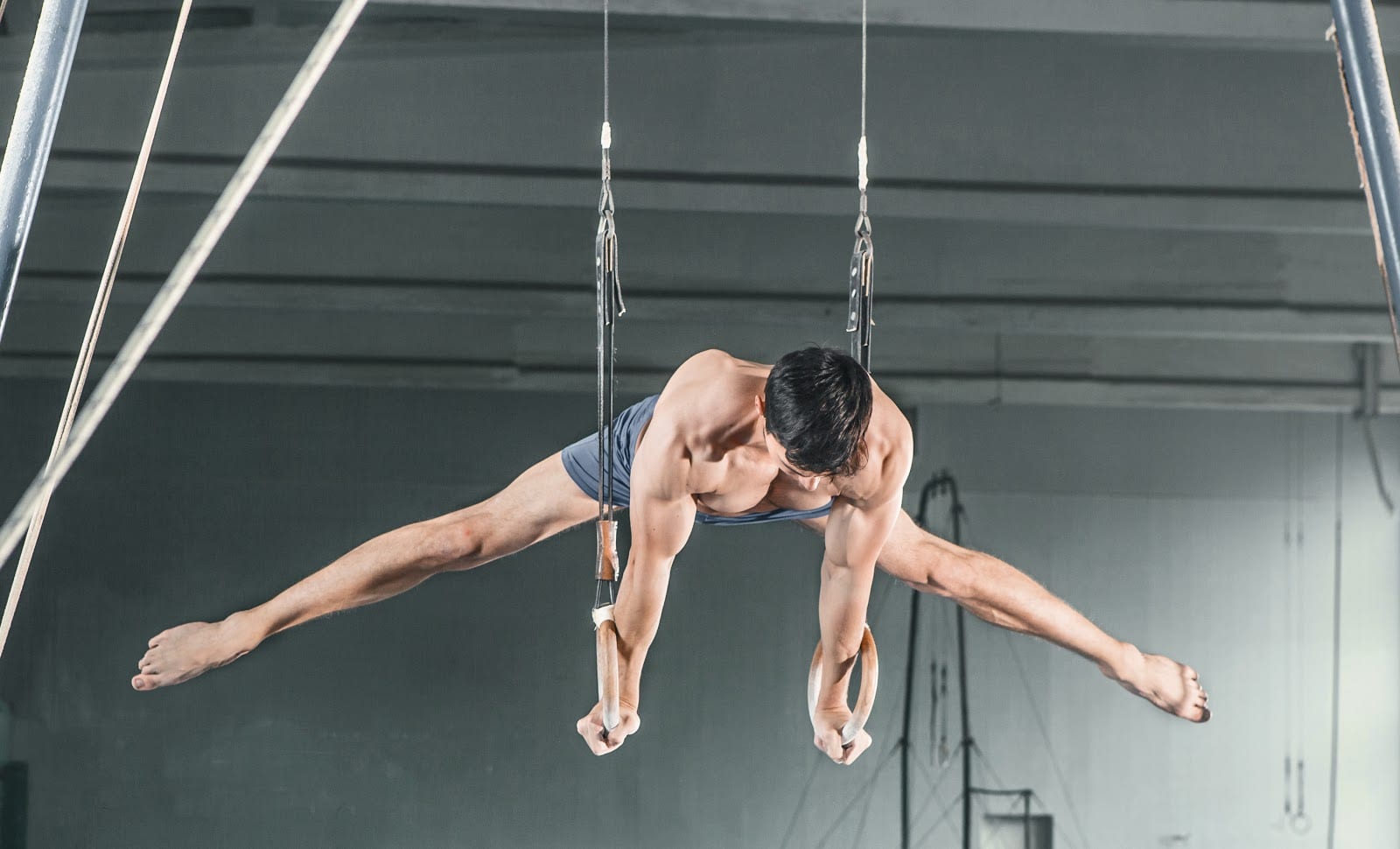
You might have heard about the phenomenon called straight-arm strength (SAS).
It is a term taken from gymnastics, and you have probably seen athletes using it to perform skills like the iron cross, planche, or crucifix.
While SAS has direct transfer to calisthenics skill work, it also has direct transfers to your regular everyday movement.
SAS helps in developing shoulder strength, stability and also bullet-proofing your joints. This means fewer injuries and stronger muscle contraction, which can lead to more gains.
Plus, if you’re wondering why gymnasts have those bouldering shoulders and massive biceps, straight-arm strength provided a large role in muscle development as well.
13. 🏆 Develops real functional strength:
Practicing bodyweight training will help you develop the strength that is functional in real life.
Functional strength is the ability to move your full body in space in a full range of motion with complete control and without pain, stiffness, or discomfort.
Bar athletics is the ultimate test of functional strength. It’s totally unforgiving. I know many huge people and pull vast amounts of iron in the gym, but they can’t do a single muscle-up or struggle with deep squats.
While these movements may seem useful only in your workout park, mastering these moves lets, you perform the most basic everyday tasks with ease.
14. 🏆 Develops hand strength:
This is a unique aspect of calisthenics. Your hands will be involved in every single movement in calisthenics.
I trained with weights for years, and the last thing I wanted to fatigue my hands and forearms before I hit those specific muscle groups.
In calisthenics, your hands and forearms are extensions of your grip. They are essential, and you will quickly learn that you can have the strongest bicep in the world, but if your hands and forearms are not strong enough to transfer the strength; they are useless.
You can always add exercises to develop additional grip strength, but you should develop it naturally as you train and progress.
15. 🏆 Amazing moves and skills
We’ve all seen it. Breath-taking moves that exhibit exceptional strength, skill, and muscle control.
Skill work is a unique aspect of calisthenics, and why many of us are hooked on training with the approach. Skills are something motivating to work on, especially those advanced jaw-dropping movements and statics.
Building a strong and aesthetic body, you can do that in the gym as well. But learning a skill and improving strength, aesthetic, mobility, and other components bring a whole new level of sense of achievement.
Skill work is also a unique way to improve muscle control, strength, and mobility as skills usually require foundations.
It also usually strengthens muscles you might not be aware of and is vital for a healthy functioning, strong body.
Disadvantages of Calisthenics

There are several very good reasons why you might consider training primarily, if not exclusively, with calisthenics.
1. ✊ Leg work is limited for advanced strength gains:
Especially if you’re a beginner, leg work in calisthenics might be vast and could offer tons of variations to develop coordination, strength, and muscle gains.
But if you’re already at a certain level of fitness, a pistol squat will become pretty easy. We know easy doesn’t result in the gains we are aiming for.
You might look for something else if you’re planning to build more strength past your bodyweight. Barbell squats would be your best bet.
Although if building muscle and bodyweight strength is enough for you, calisthenics leg work will turn your legs into tree trunks. And of course, there’s always the added benefits of improving mobility, balance, and coordination with calisthenics legs training.
2. ✊ No isolation movements:
Calisthenics involves the complete body when training. All muscle groups must be in complete unison to perform an exercise with perfect form, which’s great for overall development.
But if your goal is to isolate specific muscle groups either for additional hypertrophy or target lagging muscle groups, then calisthenics will not be able to assist you in “full” isolation.
Isolation exercises are popular in the bodybuilding discipline. Calisthenics can deliver the same results!
👊 What calisthenics provide are exercises that have more muscle-specific targeted stimulation. These exercises can simulate isolation as the muscle you’re targeting will do most of the work but still expect stimulation from other supporting muscles.
They are not totally isolation exercises, but they can get the job done.
Below are examples of weight lifting isolation exercises and their calisthenics counterparts. These bodyweight exercises are scalable and can provide a high intensity.
| Muscle Group | Weight Lifting Exercise | Calisthenics Alternative |
|---|---|---|
| Chest | Dumbbell flyes | Wide grip push-ups |
| Triceps | Tricep extensions | Diamond push-ups / Tricep dips |
| Biceps | Bicep curls | Chin-ups (supinated grip) |
| Shoulders | Lateral raises | Pike push-ups / Handstand push-ups |
| Back | Lat pulldowns | Wide grip pull-ups |
| Core | Cable crunches | Hanging leg raises / L-sits |

3. ✊ Seems more challenging to progress:
The calisthenics approach tends to set major goals for a lifetime of progress, so sometimes, you might feel that progress is slow.
Every bit of progress is enormous in calisthenics.
Also, notice that there are tons of exercises and advanced skills available, which could be difficult to progress into, but hey, there’s a lifetime of goals you could set for yourself, and you’ll not run out of things to work on and challenge yourself to improve.
But if you feel like you hit a wall in your training, you have to identify the factors slowing you down. It’s not because of the calisthenics.
Not following a good program
The usual culprit for lack of progress is not following a well-structured program of calisthenics.
A common feature of a bad program is providing no progressions of exercises and lack of personalization. These programs might work for a very small number of lucky people, but they will do more harm than good for most of us. You can read more information about this in our article, “The End of Beginner/Intermediate/Advanced – that is hurting your training.“
This is why with The Movement Athlete, the app dedicated to constructing personalized programs that caters your specific needs, goals, and wants so you can progress in the most efficient, effective, and safest way.
Not staying objective with your workout
People think they’re progressing too slow through calisthenics because they haven’t made their progress measurable.
This is a common factor in which people give up with calisthenics. They can’t accurately determine if they’re making progress or progress feels slow. Ultimately, they feel like they’re not improving and end their journey.
Measuring general exercise work
Unlike weightlifting, you can easily measure your progress by monitoring your additional resistance (very measurable with quantifiable indicators thanks to the weight plates), decreased rest times, and extra time under tension or increase in sets and reps.
In calisthenics, you can also do the same but since you’re working with your own bodyweight which also adjusts to the demands, you might not notice your improvements immediately.
Especially when you are building mass with calisthenics, you might feel you get stuck at a certain level when you can’t add more reps, sets, decrease your rest period or the other factors. When this happens, remember that you are working with your bodyweight.
You might be increasing your weight. That’s why you can’t add more demands yet because you’re already doing it as you increase your weight. Or your body might not be changing weight but changes its composition: lessening the fat and increasing your lean muscles in the process.
The best way go about this is by accurately monitoring the factors for your exercise:
✅ Difficulty of exercise – This is basically the amount of resistance. You need to monitor the exact variation used and the position of the lever.
✅ Time under tension – Tempo on how you perform the exercise
✅ Volume – adding reps or sets per workout
✅ Rest time – how much rest each set
Skill work
Training skill work seems entirely intuitive, but it can actually be measurable. All you need is a video camera (which everyone has no thanks to our mobile phone nowadays), and measuring tools.
Let’s take planche lean for example. There’s a skill component in this exercise, which is the amount of lean you can do.
You can consistently train planche leans, but you will not find out if you’re actually improving if you’re not making the difficulty of the exercise quantifiable.
For planche leans, you can do it facing a wall. First, try your max lean until your hair slightly brushes on the wall. Then measure the distance between the tip of your middle finger until the wall. Now, you can move your hands backward if you want to increase the difficulty.
You check fitness expert Daniel Vadnal of FitnessFAQs on how to do this in his video below:
This is just an example of how to measure your skill work progress. There are other ways to do it for different exercises.
The main idea is we try to make everything more measurable. It’s additional work but expect huge calisthenics payoff after this.
👆 BUT YOU SHOULDN’T HAVE TO WORRY ABOUT THIS:
I know, measuring your training could be a handful and tiring process. I don’t blame you, because it is. You already have a lot on your plate. Adding the stress on your mind about what to do in your workout is troublesome.
That’s why The Movement Athlete has got you covered.
When you train with the The Movement Athlete app, you have a virtual coach that provides you a well-structured workout routine that adjusts as you progress throughout your journey.
👉 This means that you can keep track of your progress through the app’s interface, to know that you are moving forward with your training and not getting stuck.
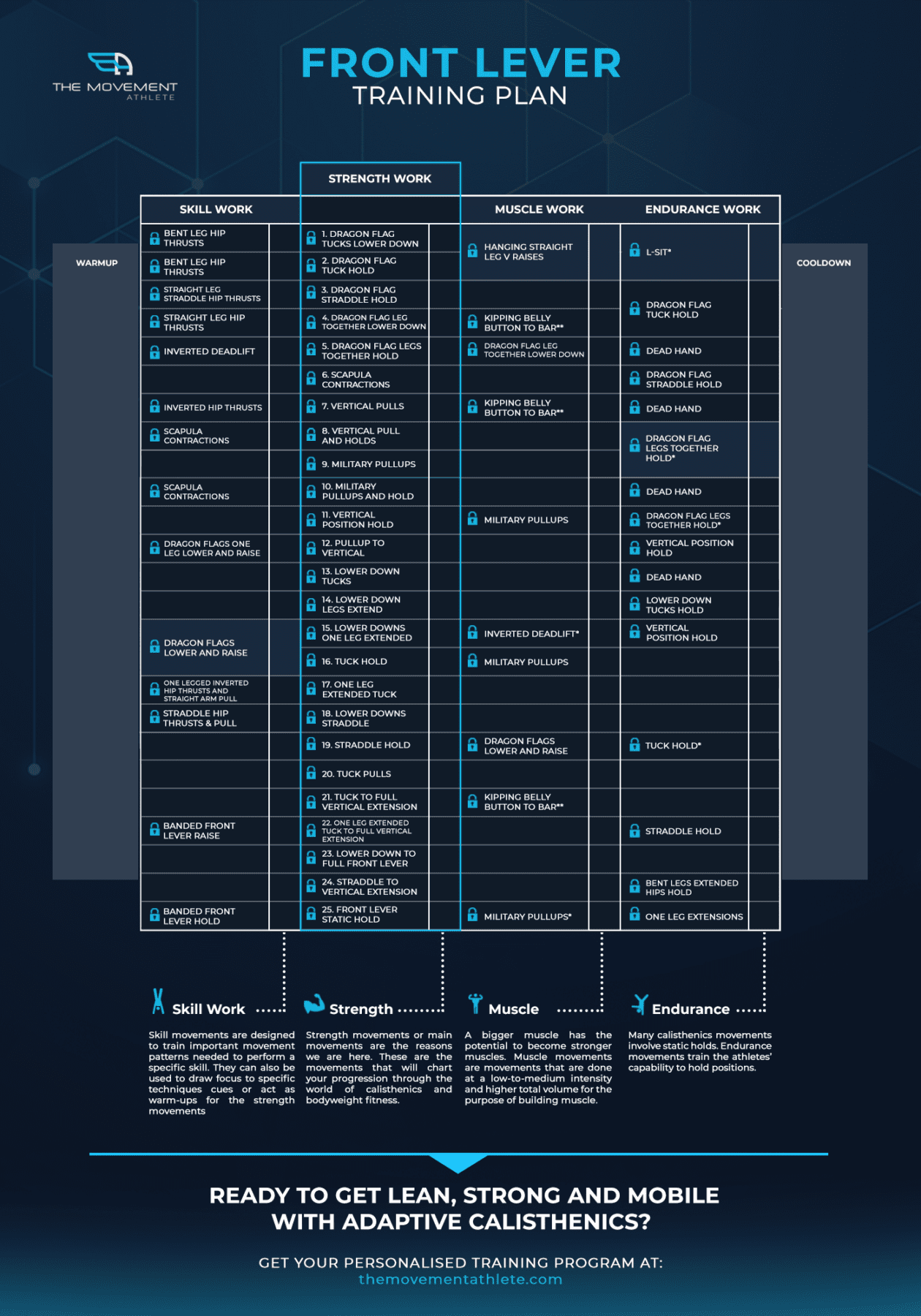
You’ll also get to work with effective sets of progressions that provide the right amount of stimulation appropriate to your skill level. This ensures that you can move forward in your journey.
Nothing too easy. Nothing too difficult.
There are tons of progressions, and workouts available, but presented in a simple layout. Comprehensive, understandably simple, yet very effective.
Even the skill training feels like you’re playing a game that you need to level up. Your skill training and other general workouts are maximized to get the maximum results
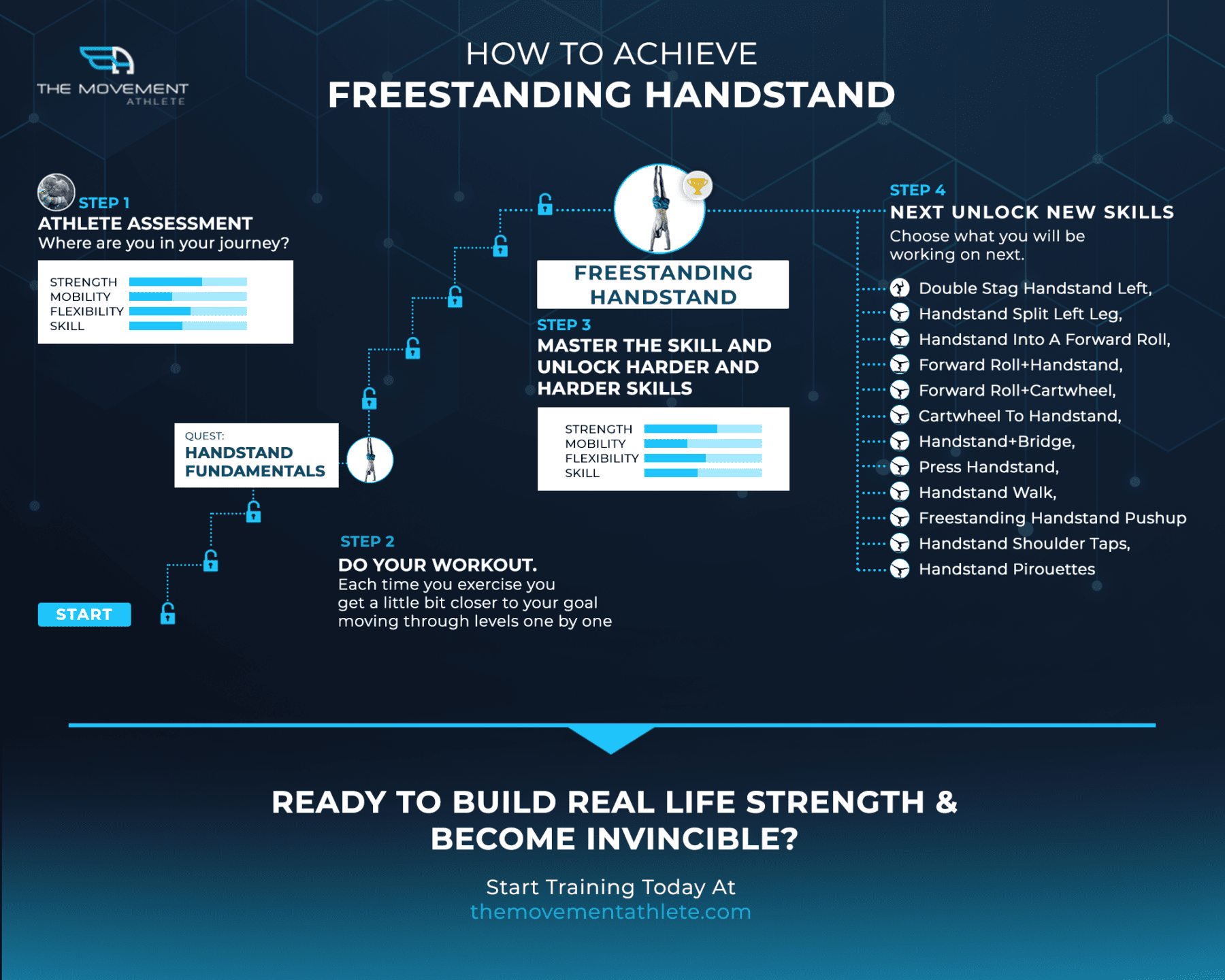
The quick step-by-step guide to level up your handstand
So you can focus on DOING your training than thinking about what to do next.
4. ✊ Many myths and misconceptions
This is not necessarily a disadvantage of calisthenics, and it’s not the approach’s fault. There are so many myths and misconceptions surrounding the approach that people usually believe. As a result, many experienced a more challenging time improving with calisthenics.
For example, I see many not even considering skill work until they have enough strength.
It’s a mistake.
📌 Skill work will play a huge role in developing proper strength. It should be included in every session. Ideally, you want to work on your skills while developing strength at the same time. You might want to practice skill exercises as a warmup to save you time, but you should have a skill component in every training session.
Because strength work becomes skill work over time, it’s essential to reassess the exercises you’ve chosen for each component as your training progresses. You should be taking a hard look at whether a given exercise counts as skill work or strength regularly work—about every 6 to 8 weeks.
Another example of a popular misconception about calisthenics is that you cannot build strong, trunk-like legs with this method.
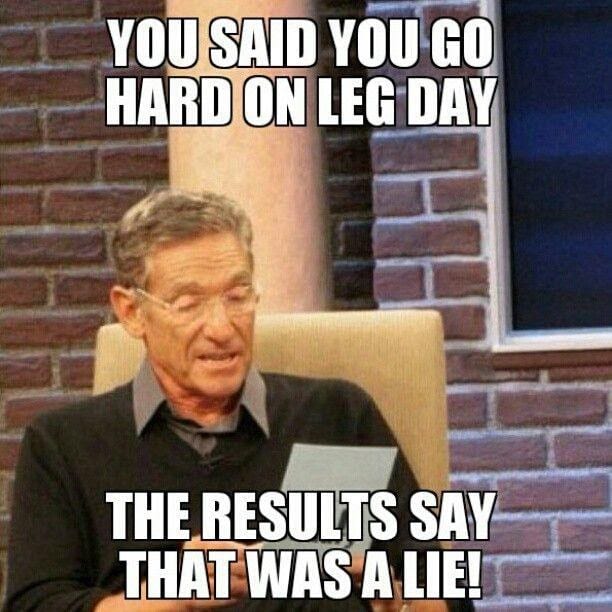
The truth is that with a proper leg program and commitment to it, you can develop strong legs as if you built them with weight training.
This misconception stems from the advanced calisthenics athletes who specialize in advanced calisthenics skills.
Usually, advanced calisthenics skills rely heavily on upper body strength.🏋️♂️ If you have less mass on your legs🦵, these skills will be a lot easier.
📌 But of course, these are special cases, and you can still make massive legs with calisthenics as long as aim for a balanced body. You can even learn advanced calisthenics skills, but it will take a bit longer before you can master the skills.
There are tons of other misinformation about calisthenics, so we need to stay informed and stay scientific about the approach.
Choose the approach appropriate to your goals 👊
👉 Calisthenics is a fantastic approach to reaching your goals, but you have to realize that it’s not perfect and it still has disadvantages.
Now that you have read the summary of advantages and disadvantages, you can now weigh if calisthenics suits your goals and interests.
Meaning to say, if your goal is 👉 to increase your absolute brute strength, then you can choose weight lifting. If your goal is to run for a marathon, focus on long-distance running methods.
If your goal is to get fit with minimal equipment, learn calisthenics. This holds especially true if you want to learn calisthenics skills.
📌 You can also mix it up and combine calisthenics with other approaches such as weight lifting or any other specific sport. This way you can also get the best of both worlds. It just takes more time and effort, of course.
💪 Do what’s fun and makes you move

At the end of the day, calisthenics has a great approach that offers massive benefits, but there are also disadvantages as well.
☝️☝️☝️The best thing to move forward is to focus on what can help you achieve your goal and sustain your interest and commitment with your chosen approach.
There’s 👎 no point in training towards a goal if you’re not also enjoying it.
As they say, the best form of exercise is the one that makes you consistently move because you enjoy it.🏅
If the amazing benefits 🏆 calisthenics can offer entice you to train with the approach, then the best way is to train with the fantastic, efficient and effective program.
Remember: Not all calisthenics are created equal. 💪
We challenge you to train with The Movement Athlete. Feel and see the results! 🏅👊👊
Reference:
The Real Benefits of Strengthening Your Core. Harvard Health Publishing. Retrieved from: https://www.health.harvard.edu/healthbeat/the-real-world-benefits-of-strengthening-your-core
Credits to these amazing photos: Photo 1, Photo 2, Photo 3, Photo 4, Photo 5, and Photo 6.
🚀 Start Your Calisthenics Journey Today
